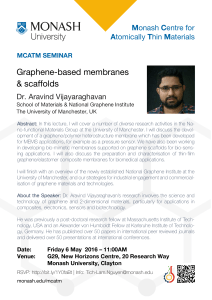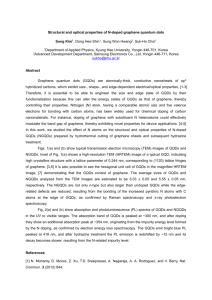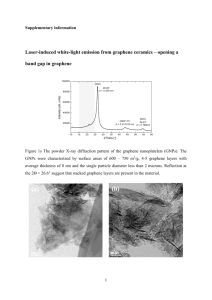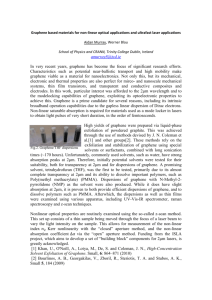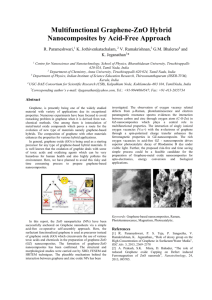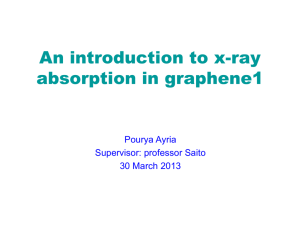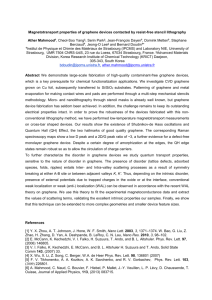isla
advertisement
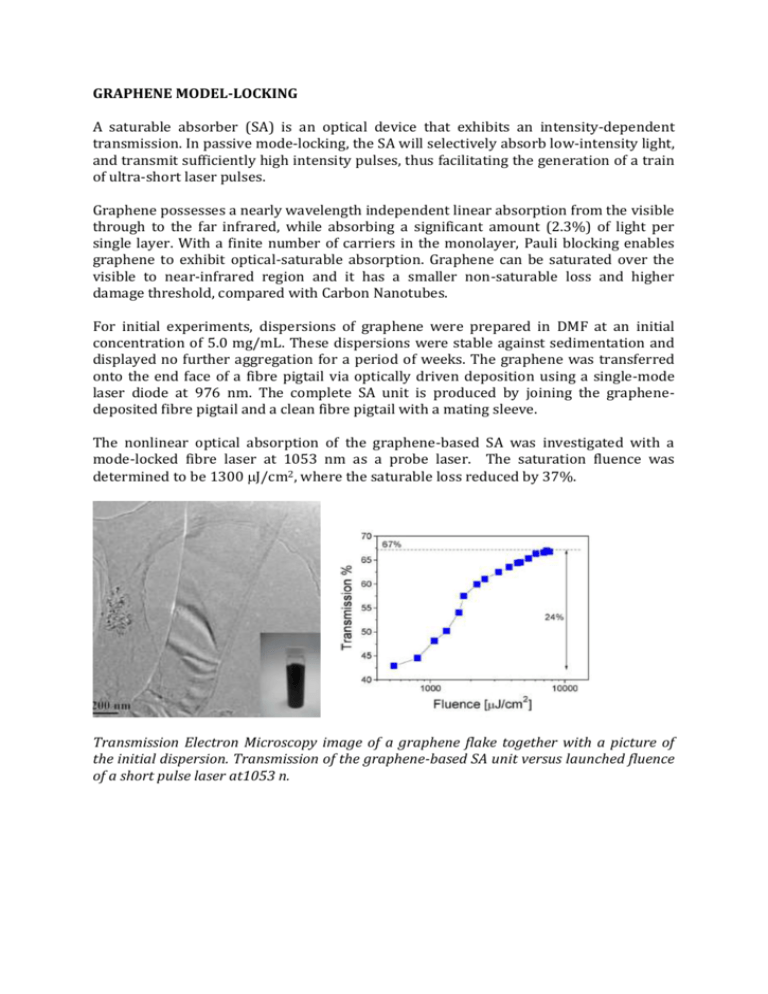
GRAPHENE MODEL-LOCKING A saturable absorber (SA) is an optical device that exhibits an intensity-dependent transmission. In passive mode-locking, the SA will selectively absorb low-intensity light, and transmit sufficiently high intensity pulses, thus facilitating the generation of a train of ultra-short laser pulses. Graphene possesses a nearly wavelength independent linear absorption from the visible through to the far infrared, while absorbing a significant amount (2.3%) of light per single layer. With a finite number of carriers in the monolayer, Pauli blocking enables graphene to exhibit optical-saturable absorption. Graphene can be saturated over the visible to near-infrared region and it has a smaller non-saturable loss and higher damage threshold, compared with Carbon Nanotubes. For initial experiments, dispersions of graphene were prepared in DMF at an initial concentration of 5.0 mg/mL. These dispersions were stable against sedimentation and displayed no further aggregation for a period of weeks. The graphene was transferred onto the end face of a fibre pigtail via optically driven deposition using a single-mode laser diode at 976 nm. The complete SA unit is produced by joining the graphenedeposited fibre pigtail and a clean fibre pigtail with a mating sleeve. The nonlinear optical absorption of the graphene-based SA was investigated with a mode-locked fibre laser at 1053 nm as a probe laser. The saturation fluence was determined to be 1300 J/cm2, where the saturable loss reduced by 37%. Transmission Electron Microscopy image of a graphene flake together with a picture of the initial dispersion. Transmission of the graphene-based SA unit versus launched fluence of a short pulse laser at1053 n.

